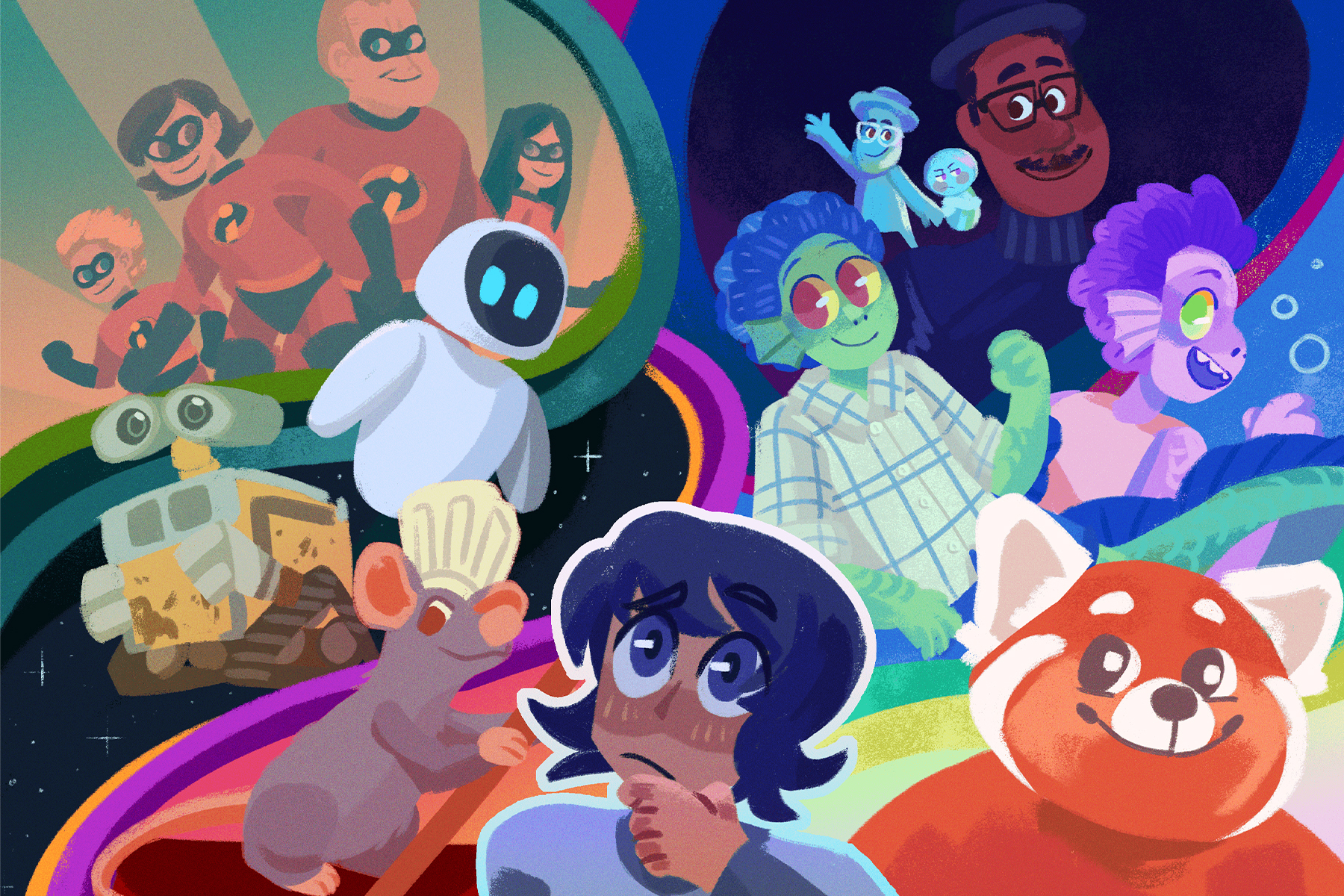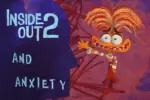Slated for a Disney+ release in mid-March, the newest animated feature film by Pixar, “Turning Red,” has garnered a lot of social media attention in recent months and it has many people, in fact, turning red.
Through the years, the quality of both live and animated films increased substantially. Whether it was the advancement of camera technology, CGI or animation techniques, the change is undeniable and it is reflected in Pixar’s multi-million-dollar movie budgets.
Responses to the Pixar Animation “Turning Red”
Several months prior to the release of the official “Turning Red” trailer, Pixar posted a teaser trailer on their YouTube channel that featured a short, but visually expressive synopsis of the film. Since then, the film received a relatively positive reaction from the press. However, in October 2021, Twitter user @Bolverk15 quote tweeted a post that read, “OKAY BUT I AM SO HERE FOR THIS ERA OF PIXAR’S ANIMATION,” replying with, “Twitter users looking at the most bland looking art style you’ve ever seen like: ‘wow okay but I am so here for this.’” Along with a number of other tweets made by @Bolverk15 that also addressed the film, hundreds of users responded with varying degrees of agreement while some others chose to express their objections.
Twitter users looking at the most bland looking art style you've ever seen like: "wow okay but I am so here for this" https://t.co/gJoT78o2TQ
— B0l (@Bolverk15) October 29, 2021
“Turning Red” tells the story of a 13-year-old Chinese-Canadian girl named Mei Lee who, upon waking up one morning, discovers that she is able to transform into a red panda. This ability to transform comes as a curse to Mei as it is totally involuntary and occurs when she is under duress or becomes excited. Post-official trailer release, it is evident that Mei’s sudden overnight change is an allegory for the process of going through puberty for girls.
Taking the message of “Turning Red” into consideration, it is a little funny that online movie critics and social media users worked themselves up about an animated movie geared toward children. While, yes, Pixar’s aim is to create movies with the entire family in mind, the animation company’s primary audience is children and it’s not too difficult to guess why the movie’s animation takes on an overly expressive, cartoonish style. To insinuate that there’s been a decline in the quality of Pixar movies is to disregard the number of other incredibly well-received films that have come out of Pixar within the last few years.
Coco (2017)
“Coco,” Pixar’s first film with a Mexican protagonist, follows the journey of a 12-year-old aspiring musician named Miguel through the Land of the Dead as he searches for his great-great-grandfather, famed Mexican singer Ernesto de la Cruz. After sneaking away from his anti-music family to perform in a Day of the Dead talent show, Miguel finds himself cursed to walk the Land of the Dead after removing de la Cruz’s guitar from his tomb. He then spends the entirety of the film chasing after de la Cruz so he can ask for his familial blessing to return to the real world. However, Miguel discovers that the man who’s been guiding him around the city, Hector, once performed alongside Ernesto, but was poisoned by him when he attempted to return to his family.
From start to finish, “Coco” is a visually striking film — the level of detail placed by Pixar’s animators not only extends to the intricate designs of the characters, from their clothing to the carvings on their skulls, but to the backdrops themselves, which stay true to Mexican aesthetics and culture. Anybody who’s made a visit to Mexico can recognize how heavily Pixar drew from the country’s cities all the way down to their cobblestone roads and architecture — a testament to Pixar’s creativity.
Soul (2020)
Compared to most Pixar films, “Soul” is surprisingly the one movie that is seemingly geared toward an adult audience. Not soon after its release, “Soul” won an Oscar for best animated feature as a result of not only its otherworldly portrayal of what a soul might look like, but also the almost mystical sounding soundtrack composed by acclaimed musicians Trent Reznor, frontman of Nine Inch Nails, and Atticus Ross, who have both worked on the music for other famous films such as “Gone Girl” and “The Social Network.”
Although “Coco” focused on maximalism, the animators decided to take a step back into minimalism with “Soul.” When the film isn’t following the daily life of Joe Gardner, a middle school jazz band director, it takes us into an abstract view of the afterlife (What is it with Pixar and death?) made up of simples shapes and a black and white color palette: The Great Beyond. Its opposite is the Great Before, a reincarnation-based heaven that is all shapeless forms and glowing pastels. “Soul” itself makes history as the first Pixar movie with a Black lead, and the film’s dreamy visuals help push the boundaries of what the animation studio is able to achieve.
Luca (2021)
“Luca,” Pixar’s most recent feature film, revolves around a half-human, half-sea monster named Luca Paguro and his two friends, Alberto Scorfano, who is also a half-human half-sea monster, and Giulia Marcovaldo. Just like any other Pixar film, the animation style of “Luca” remains the same, but again, like the others, it has its own character designs, this time true to its setting of 1960s Italy. With films like “Luca,” Pixar puts the ability of its animators to the test, evident in the scenes where Alberto and Luca transform into their sea monster form, all while keeping the studio’s signature bouncy and exaggerated style.
Comparing the animation style of “Toy Story” and “The Incredibles” to the life-like textures featured in the trailer for “Turning Red,” it is evident that Pixar’s animation style has not declined. Maybe an animation studio’s work might not be someone’s cup of tea, but dismissing their progress because it is “bland looking” is not accurate. Sometimes, it’s a good thing to leave film criticism to actual film critics.

















